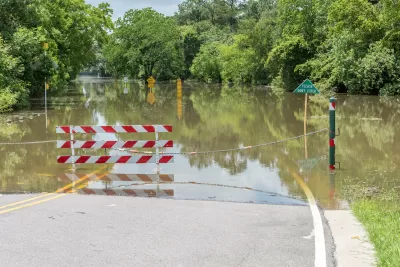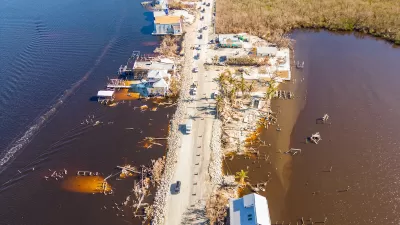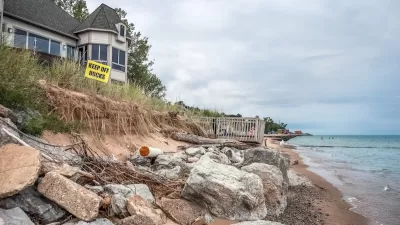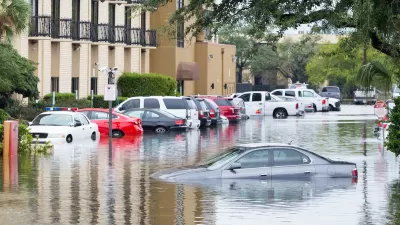As more Americans are displaced by wildfires, flooding, erosion, and other climate risks, safer regions should prepare for a wave of migration.

Parts of the country that are protected from many of the worst climate disasters and extreme weather could see a major influx of population in the next few years, writes Abrahm Lustgarten in The Atlantic, citing an interview with Beth Gibbons of the American Society of Adaptation Professionals (ASAP).
Tens of millions of Americans may move in response to these changes, fleeing coasts and the countryside for larger cities and more temperate climates. In turn, the extent to which our planet’s crisis can present an economic opportunity, or even reimagining, will largely depend on where people wind up, and the ways in which they are welcomed or scorned.
Gibbons says states like Michigan, where towns have underutilized infrastructure and relatively cheap housing, should encourage Californians and others displaced by wildfire risk to move there. “The Great Lakes region should market itself as a climate refuge, she thinks, and then build an economy that makes use of its attributes: the value of its water, its land, its relative survivability.”
However, climate migration can also lead to gentrification and tensions between old and new residents; “not so far down the line, forced migration could instead yield fears of newcomers as economic burdens.”
FULL STORY: America’s Climate Boomtowns Are Waiting

Planetizen Federal Action Tracker
A weekly monitor of how Trump’s orders and actions are impacting planners and planning in America.

Congressman Proposes Bill to Rename DC Metro “Trump Train”
The Make Autorail Great Again Act would withhold federal funding to the system until the Washington Metropolitan Area Transit Authority (WMATA), rebrands as the Washington Metropolitan Authority for Greater Access (WMAGA).

The Simple Legislative Tool Transforming Vacant Downtowns
In California, Michigan and Georgia, an easy win is bringing dollars — and delight — back to city centers.

The States Losing Rural Delivery Rooms at an Alarming Pace
In some states, as few as 9% of rural hospitals still deliver babies. As a result, rising pre-term births, no adequate pre-term care and "harrowing" close calls are a growing reality.

The Small South Asian Republic Going all in on EVs
Thanks to one simple policy change less than five years ago, 65% of new cars in this Himalayan country are now electric.

DC Backpedals on Bike Lane Protection, Swaps Barriers for Paint
Citing aesthetic concerns, the city is removing the concrete barriers and flexposts that once separated Arizona Avenue cyclists from motor vehicles.
Urban Design for Planners 1: Software Tools
This six-course series explores essential urban design concepts using open source software and equips planners with the tools they need to participate fully in the urban design process.
Planning for Universal Design
Learn the tools for implementing Universal Design in planning regulations.
Smith Gee Studio
City of Charlotte
City of Camden Redevelopment Agency
City of Astoria
Transportation Research & Education Center (TREC) at Portland State University
US High Speed Rail Association
City of Camden Redevelopment Agency
Municipality of Princeton (NJ)





























